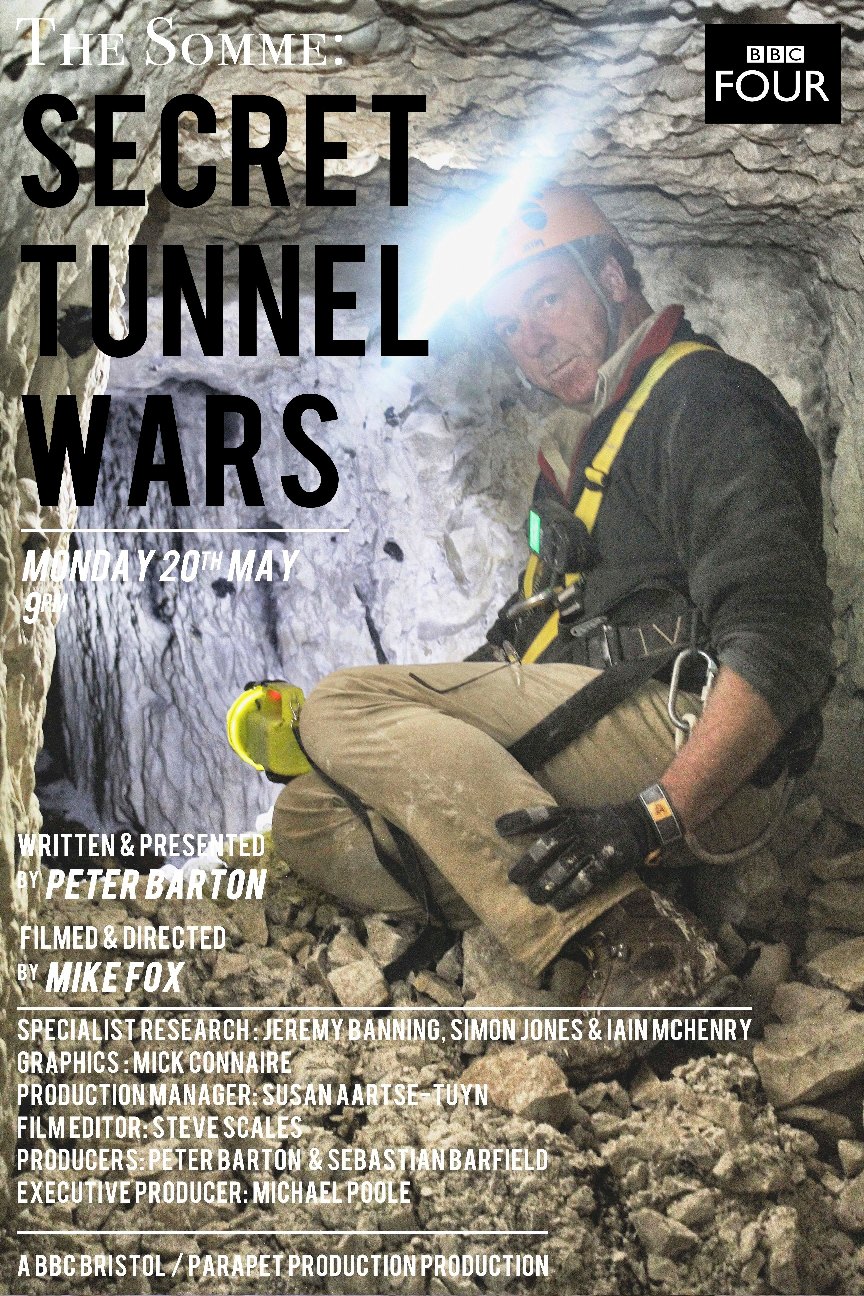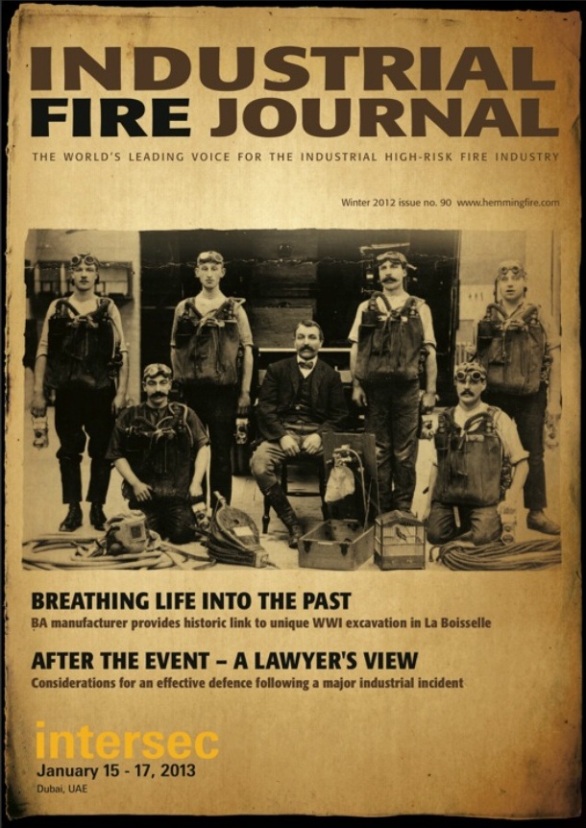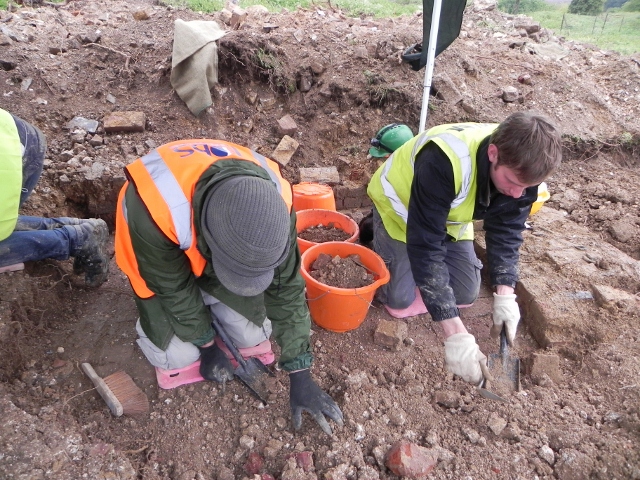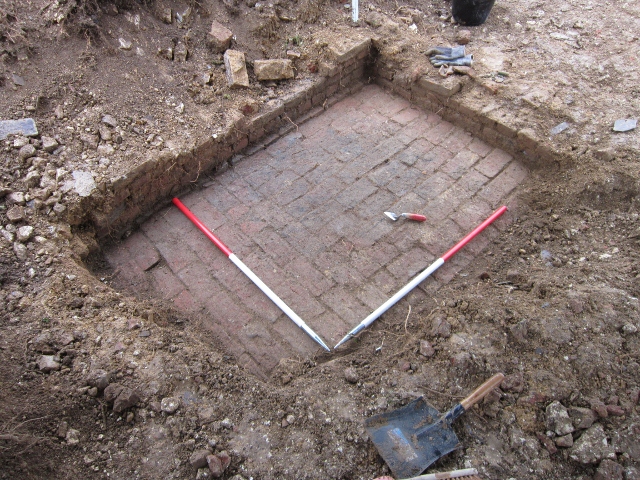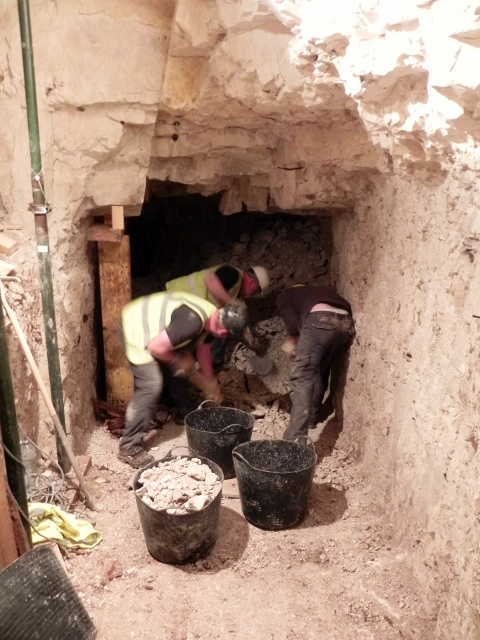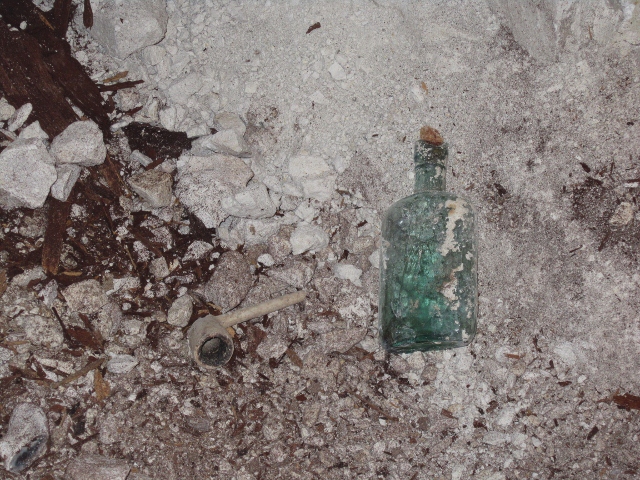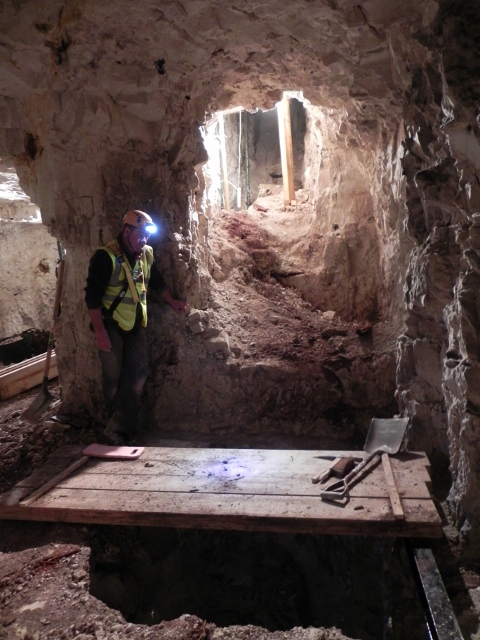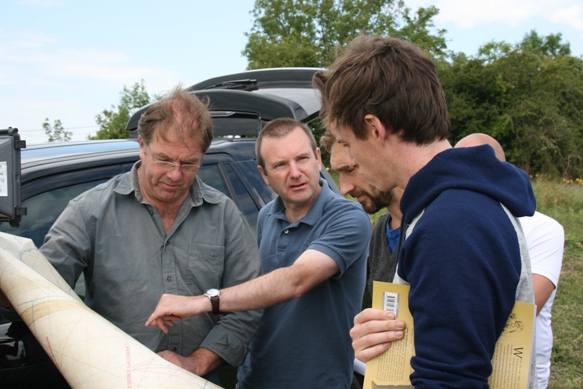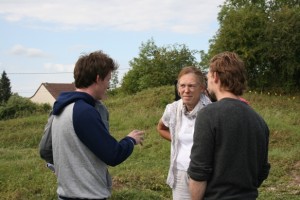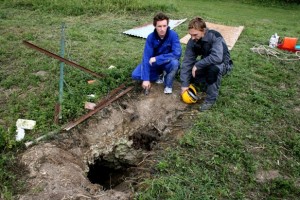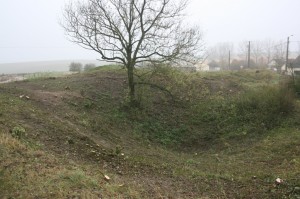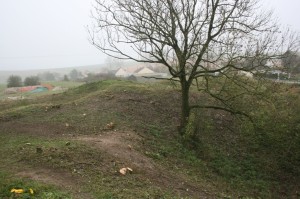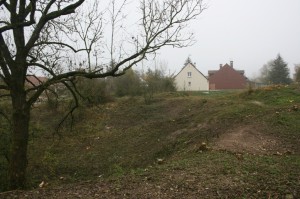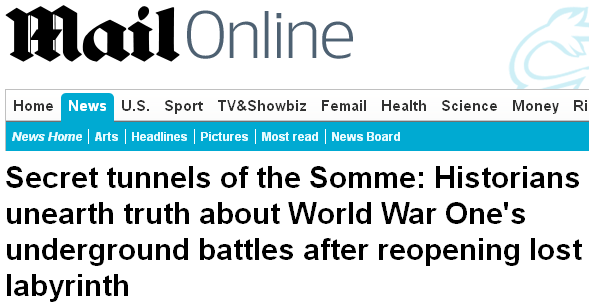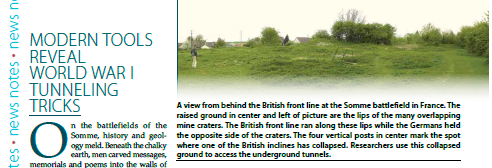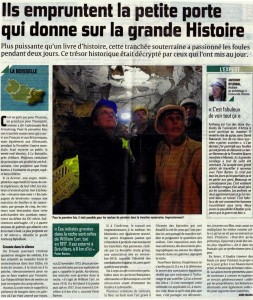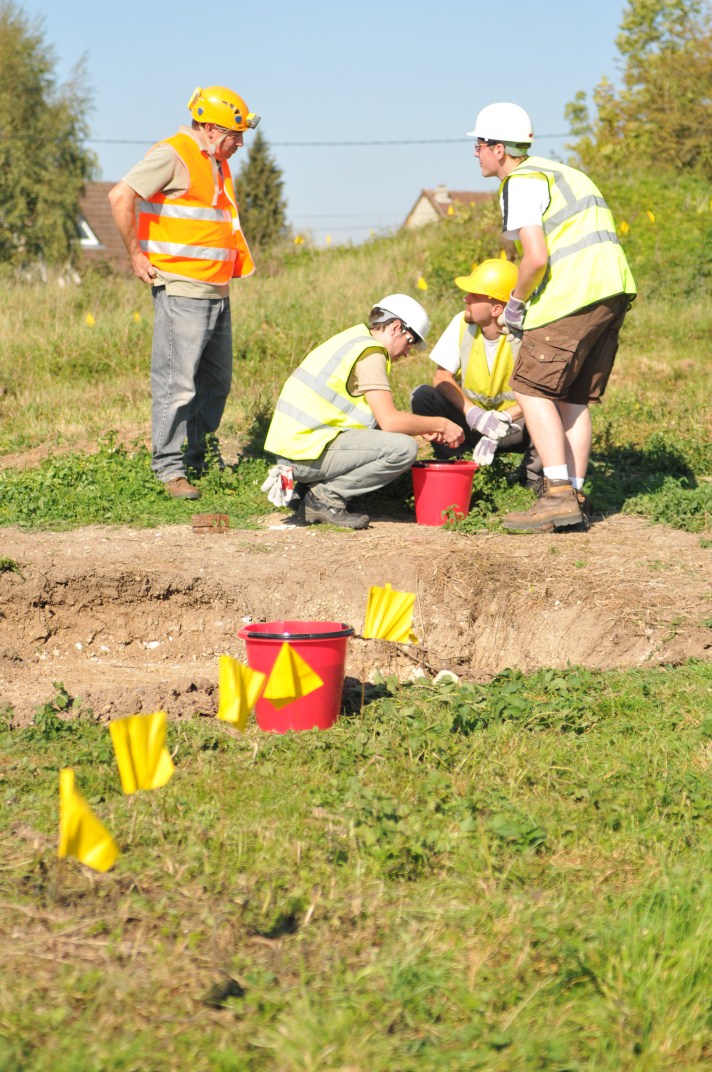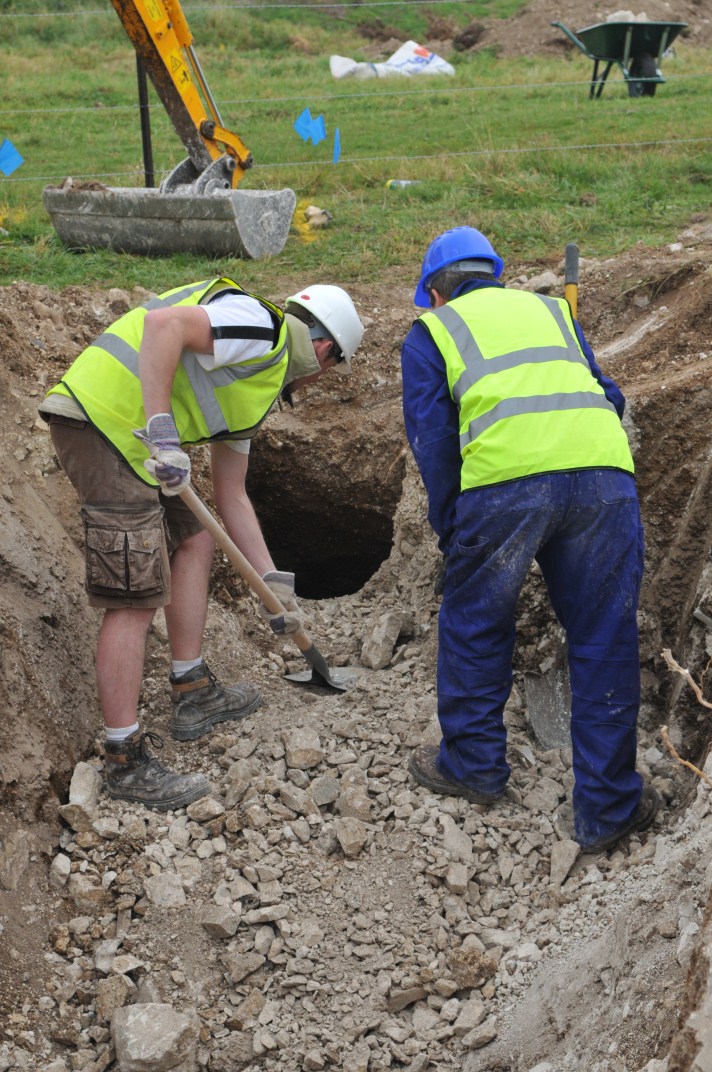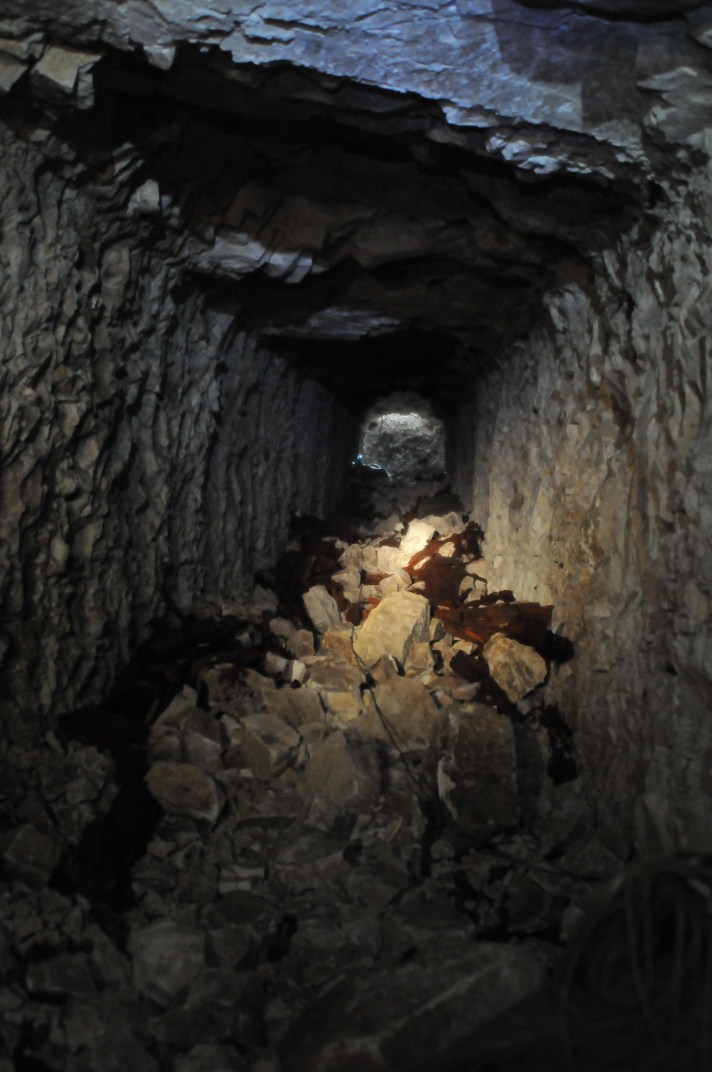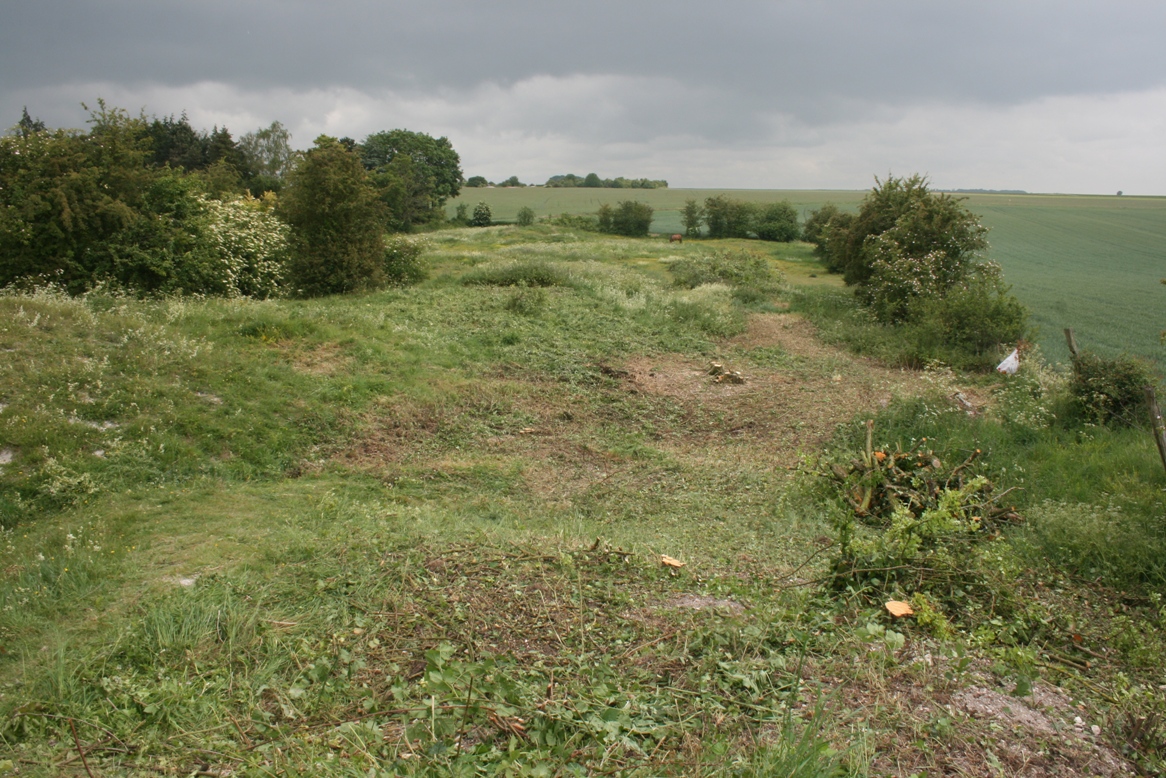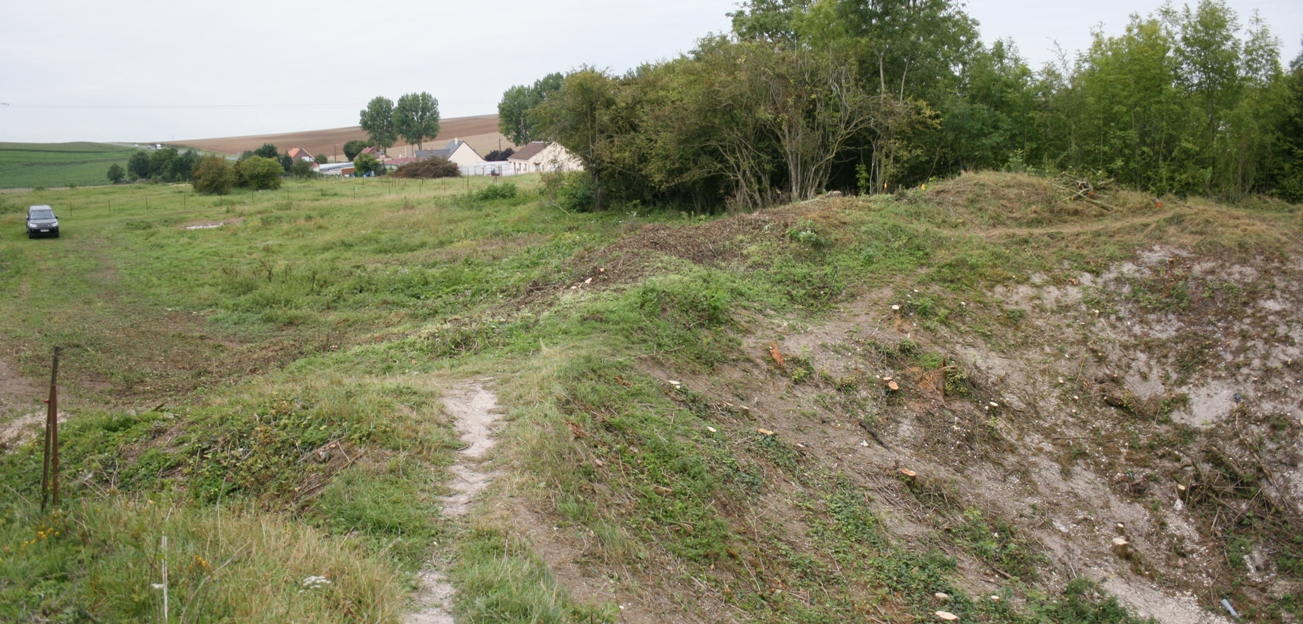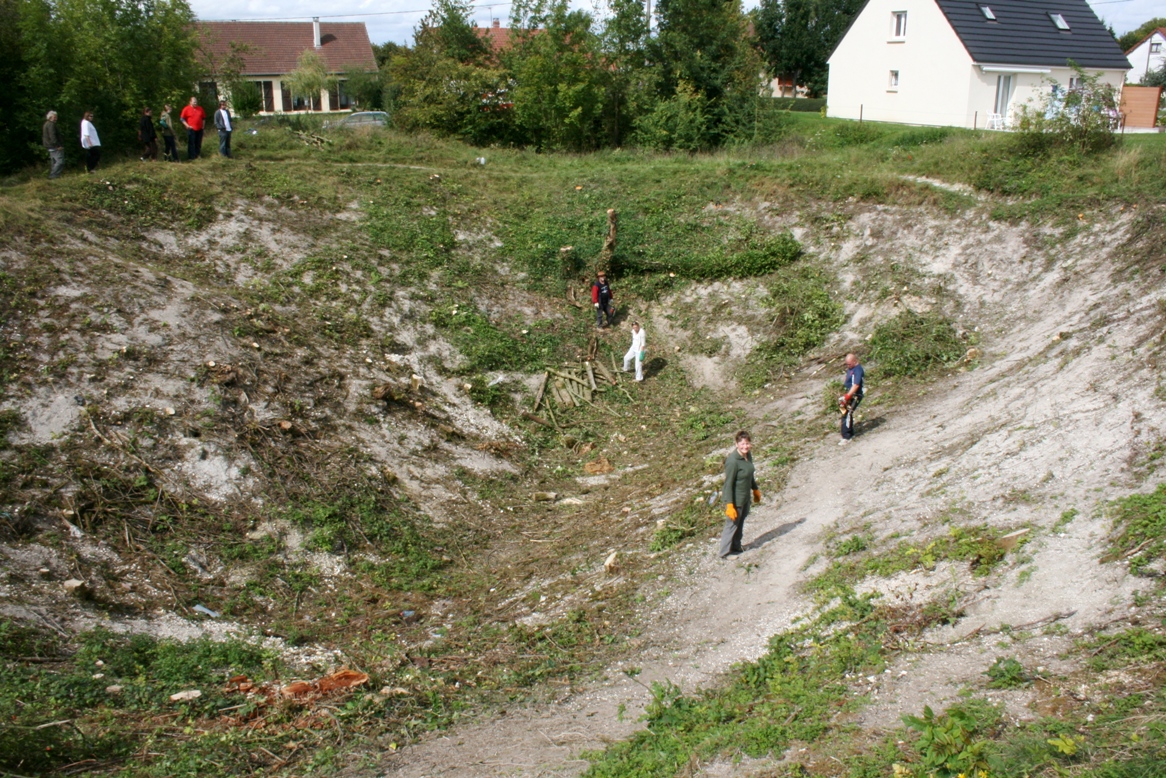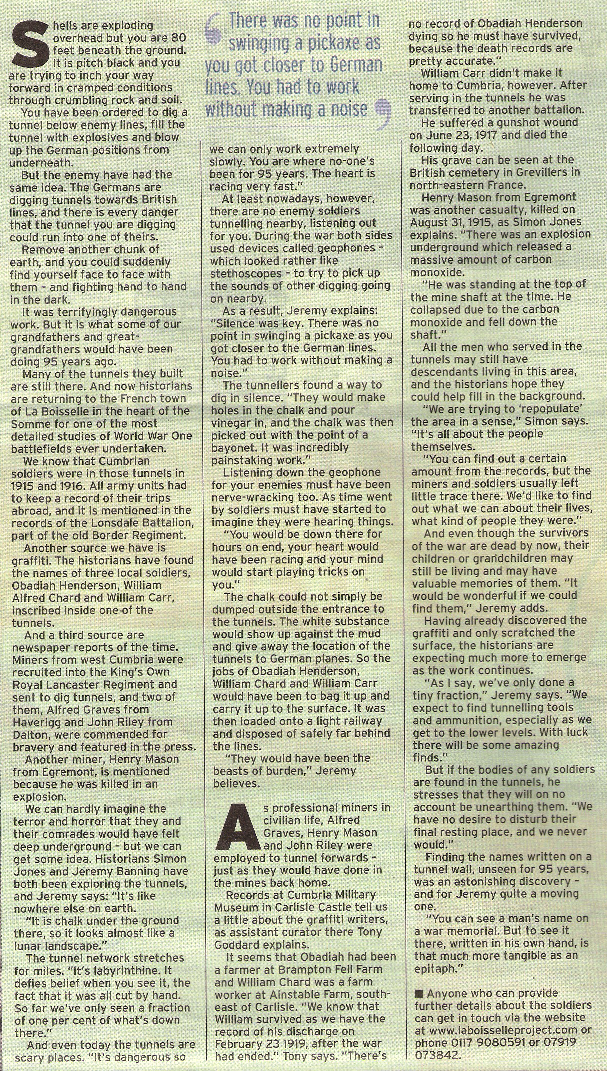The team spent two days on site in early March. Some of this time was given over to media commitments which included showing Frank Barrett, a journalist from the Mail on Sunday around the site, as well as filming a short piece with a crew from Channel 5ŌĆÖs ŌĆśLive with GabbyŌĆÖ daytime show. The results can be seen here: http://www.laboisselleproject.com/2012/03/18/recent-media-coverage-for-the-project/.
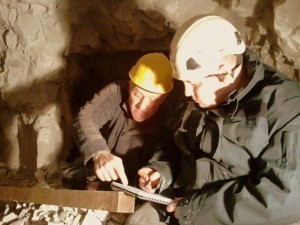
Gary Andrews & Danny Gunner at W Shaft discussing plans for the steel cage
Our primary task, however, was to inspect and survey parts of W Shaft chamber in order to determine dimensions for the planned steel safety cage which will be specially fabricated to sit over the W Shaft. We were joined by one of our key colleagues Danny Gunner who is generously sponsoring the fabrication, transport and erection of the structure, as well as safety equipment, winches and lighting, and briefing and training for working in confined spaces.
Over the past 95 years small falls from the roof have altered the chamberŌĆÖs shape so it now resembles that of a bell. The logistics of designing and installing a rectangular steel frame into this irregular shape was discussed in detail. The dimensions of W Shaft were re-confirmed (1.8m square) in order to ascertain the necessary size for the steel collar which will form the base of the cage. The shaft itself was ascertained to have 4 metres of spoil at the bottom. It was also calculated that up to 40 metric tonnes of spoil will need to be removed from the chamber area to allow for archaeology, shoring and bracing to take place.
To facilitate the removal of spoil from the chamber, and to protect the original 1916 floor, a wooden duckboard walkway was installed along 30 metres of W Adit.
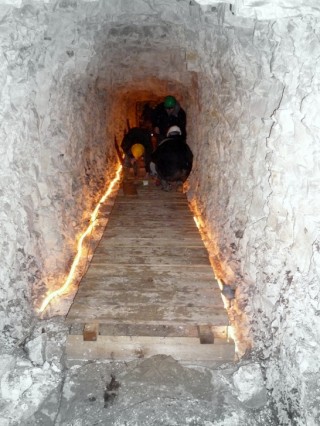
Team members constructing the duckboard floor in W Adit
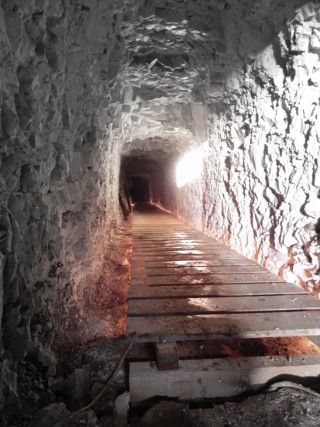
W Adit with new duckboard flooring - 6 March 2012
Archaeology was continued at the bottom of the steeper 1915 ŌĆśX InclineŌĆÖ.┬Ā Finds included a well-preserved sandbag wall, a long and intertwined length of steel-reinforced rubber air hose with brass fittings, and an axle with rubberised wheels at each end.┬Ā When first uncovered we hoped it would be a small miners truck. However, as it was excavated it soon became evident that it was too long for use in mine galleries, its length being considerably wider than the tunnels.┬Ā The base of an oil lamp, a mess tin, and an empty tin of 25 Meadowland cigarettes were also uncovered. Work continues on cleaning, cataloguing and preserving these finds.

Sandbag wall, air pipe and rubber wheeled axle uncovered at the bottom of X Incline - 6 March 2012
Further archival study of several surface features was planned. This includes the history of the Il├┤t/Granathof prior to the war, the struggle for the farm, detail of a German raid across the craters against 1/7th Black Watch on 4 August 1915 which resulted in the first British prisoner being taken, and two raids on the German lines by the Northumberland Fusiliers in June 1916. We now also have material to illustrate the symbolic 1937 ceremony at the Glory Hole between representatives of the Black Watch and 19thBreton Regiment. When we are next on site there should be much more interpretative material for visitors to enjoy. ┬ĀArchival research in French, British and German records continues.
Selected images
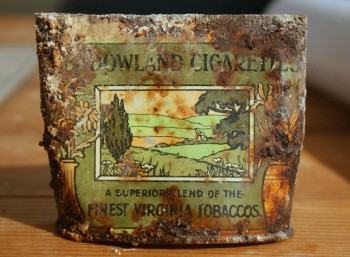
Empty tin of Meadowland cigarettes found at the foot of X Incline. Hidden for over ninety years, they are in a superb condition.
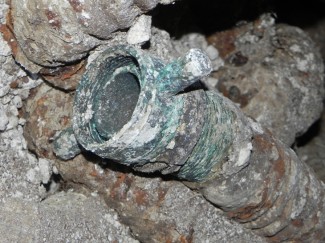
The brass fitting at the end of the intertwined length of steel-reinforced rubber armoured hose found at the foot of X Incline.
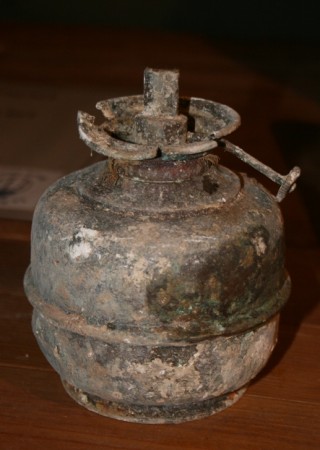
The well preserved base of an oil lamp found in X Incline
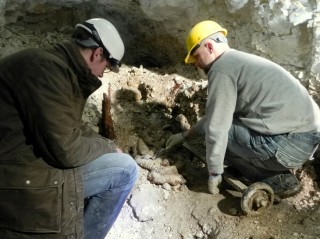
Anthony Byledbal & Romain Leroy excavate the bottom of X Incline
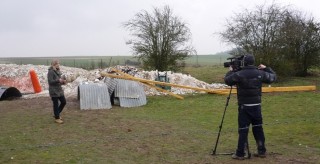
Kate McIntyre filming for Live with Gabby TV show at the entrance to W Adit




